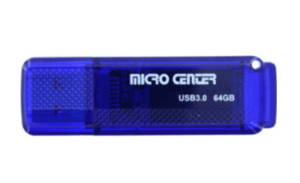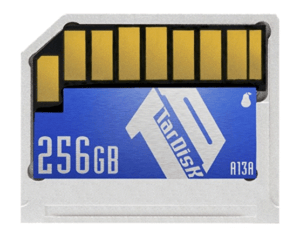Small Mac, big files
![]() Small Mac, big files: a reader asks…
Small Mac, big files: a reader asks…
I read your note about working with a Mac that has a full hard drive, but can you recap the essentials for me? I have a huge Photos library on my 2014 Macbook Air with 256gb SSD.
Ok, I’ve written about this general issue several times, in my articles More Space on Mac, Huge Apple Photos library, MacOS won’t start, and Locked up Macbook. When you click the Apple > About this Mac and then click the Storage tab you can see the status of your hard drive. You can also get info on the file in your Pictures folder for the Photo Library to see how much space the database is using for your Apple Photos app. Assuming your hard drive is at or near capacity, it’s time to think about either increasing your storage space, reducing your hard disk usage, or making some other accommodation to resolve the problem.
The problem (partly of Apple’s marketing) is that many consumers purchased a Macbook Air as a replacement for a desktop or laptop computer. Being extremely light-weight, the Macbook Air line generally has a much smaller size hard drive than what consumers have been used to. Due to engineering aspects of the Macbook Air, it would be exceedingly expensive to send in your Macbook Air to Apple and have them increase the internal storage memory.
So how to resolve this issue? With your Macbook Air, you have three common choices to manage your huge Photo library and avoid the problem of a full hard drive:
 The Apple way: You would pay Apple money for additional iCloud storage space, turn on iCloud Library and set your Photos app (in the Options) to “Optimize Mac Storage”. With that option turned on, all your photos would be copied up to iCloud, and your Photos app would monitor your hard drive. As the drive fills up, the app would delete photos from your internal hard drive, leaving just the thumbnails showing in the app. Anytime you click on a photo thumbnail, that photo would re-download from iCloud for you to work with. It happens all automatically, and you just have to live with paying Apple for the space: a buck a month for 50 gigabytes, three bucks a month for 200 gigabytes, or ten bucks a month for 1 terabyte of iCloud storage.
The Apple way: You would pay Apple money for additional iCloud storage space, turn on iCloud Library and set your Photos app (in the Options) to “Optimize Mac Storage”. With that option turned on, all your photos would be copied up to iCloud, and your Photos app would monitor your hard drive. As the drive fills up, the app would delete photos from your internal hard drive, leaving just the thumbnails showing in the app. Anytime you click on a photo thumbnail, that photo would re-download from iCloud for you to work with. It happens all automatically, and you just have to live with paying Apple for the space: a buck a month for 50 gigabytes, three bucks a month for 200 gigabytes, or ten bucks a month for 1 terabyte of iCloud storage. The cheapest way: If you have (or get) an external thumbdrive or storage drive (or a Time Capsule on your network), you could move your Photo library file to there and free up the space on your internal hard drive. This means two things: First, your Photos app would probably take a lot longer to load, since external file storage sources are much slower than the internal hard drive. Second, you wouldn’t be able to run the Photos app without having the thumbdrive or external drive plugged into your Macbook Air (or be on the same network as the Time Capsule). To make this switch, you’d first copy the Photos library file from the Pictures folder to the external hard drive (this could take hours). Then, hold down the Option key while starting up the Photos app and specify the new location of the Photos file. Finally, delete the Photos library file from your Pictures folder.
The cheapest way: If you have (or get) an external thumbdrive or storage drive (or a Time Capsule on your network), you could move your Photo library file to there and free up the space on your internal hard drive. This means two things: First, your Photos app would probably take a lot longer to load, since external file storage sources are much slower than the internal hard drive. Second, you wouldn’t be able to run the Photos app without having the thumbdrive or external drive plugged into your Macbook Air (or be on the same network as the Time Capsule). To make this switch, you’d first copy the Photos library file from the Pictures folder to the external hard drive (this could take hours). Then, hold down the Option key while starting up the Photos app and specify the new location of the Photos file. Finally, delete the Photos library file from your Pictures folder. My favorite way: This only works if your Macbook Air has an SD card slot (on the right-side of the Macbook Air). Purchase a Tardisk to fit your Mac from https://www.tardisk.com/pages/buy and insert/install it. That device will combine itself with your internal hard drive and make your system act as if it has a much larger internal storage drive. A 128gb Tardisk will set you back $150 and the 256gb size will cost $400. A hefty price but it’s a one-time cost, unlike the ongoing subscription fees for iCloud storage.
My favorite way: This only works if your Macbook Air has an SD card slot (on the right-side of the Macbook Air). Purchase a Tardisk to fit your Mac from https://www.tardisk.com/pages/buy and insert/install it. That device will combine itself with your internal hard drive and make your system act as if it has a much larger internal storage drive. A 128gb Tardisk will set you back $150 and the 256gb size will cost $400. A hefty price but it’s a one-time cost, unlike the ongoing subscription fees for iCloud storage.
So why do I like #3 so much? Firstly, because it’s a permanent solution (assuming you aren’t going to use that SD slot for anything else). Second, because you won’t sacrifice the performance and speed of your internal solid-state hard drive. Even though the Tardisk storage space can’t match the speed of your internal SSD, the Pear software (that runs Tardisk) intelligently manages a cache (on the SSD) of files on the Tardisk so that you won’t notice any noticeable slowdown loading and using files.
 I should mention that there’s a cheaper option than Tardisk, called the Transcend JetDrive. The 256gb Transcend drive is the same cost as the 128gb Tardisk. But this option has two significant drawbacks: First, it creates a second drive where you’d store items, just like using a thumbdrive. File access would be at USB speeds, much slower than the internal SSD. Second, recent test have shown that the Transcend was only tested and certified to work on older versions of OS X. Using it on MacOS Sierra showed significant problems in disk access and usage. Therefore I can’t recommend it for anyone except folks using a Macbook Air with an old version of OS X (Yosemite or older).
I should mention that there’s a cheaper option than Tardisk, called the Transcend JetDrive. The 256gb Transcend drive is the same cost as the 128gb Tardisk. But this option has two significant drawbacks: First, it creates a second drive where you’d store items, just like using a thumbdrive. File access would be at USB speeds, much slower than the internal SSD. Second, recent test have shown that the Transcend was only tested and certified to work on older versions of OS X. Using it on MacOS Sierra showed significant problems in disk access and usage. Therefore I can’t recommend it for anyone except folks using a Macbook Air with an old version of OS X (Yosemite or older).
If you’re happy with paying Apple the subscription price for increased iCloud storage, then the first option would work fine for you. The added benefit is that iCloud photo management would cross all your Apple devices – Macs, iPhones and iPads. If you only use Apple products this can be the most cost-effective way to manage your pictures, assuming you have no problem with storing all your pictures in iCloud.
This website runs on a patronage model. If you find my answers of value, please consider supporting me by sending any dollar amount via:
or by mailing a check/cash to PosiTek.net LLC 1934 Old Gallows Road, Suite 350, Tysons Corner VA 22182. I am not a non-profit, but your support helps me to continue delivering advice and consumer technology support to the public. Thanks!
 The Apple way
The Apple way The cheapest way
The cheapest way My favorite way
My favorite way





